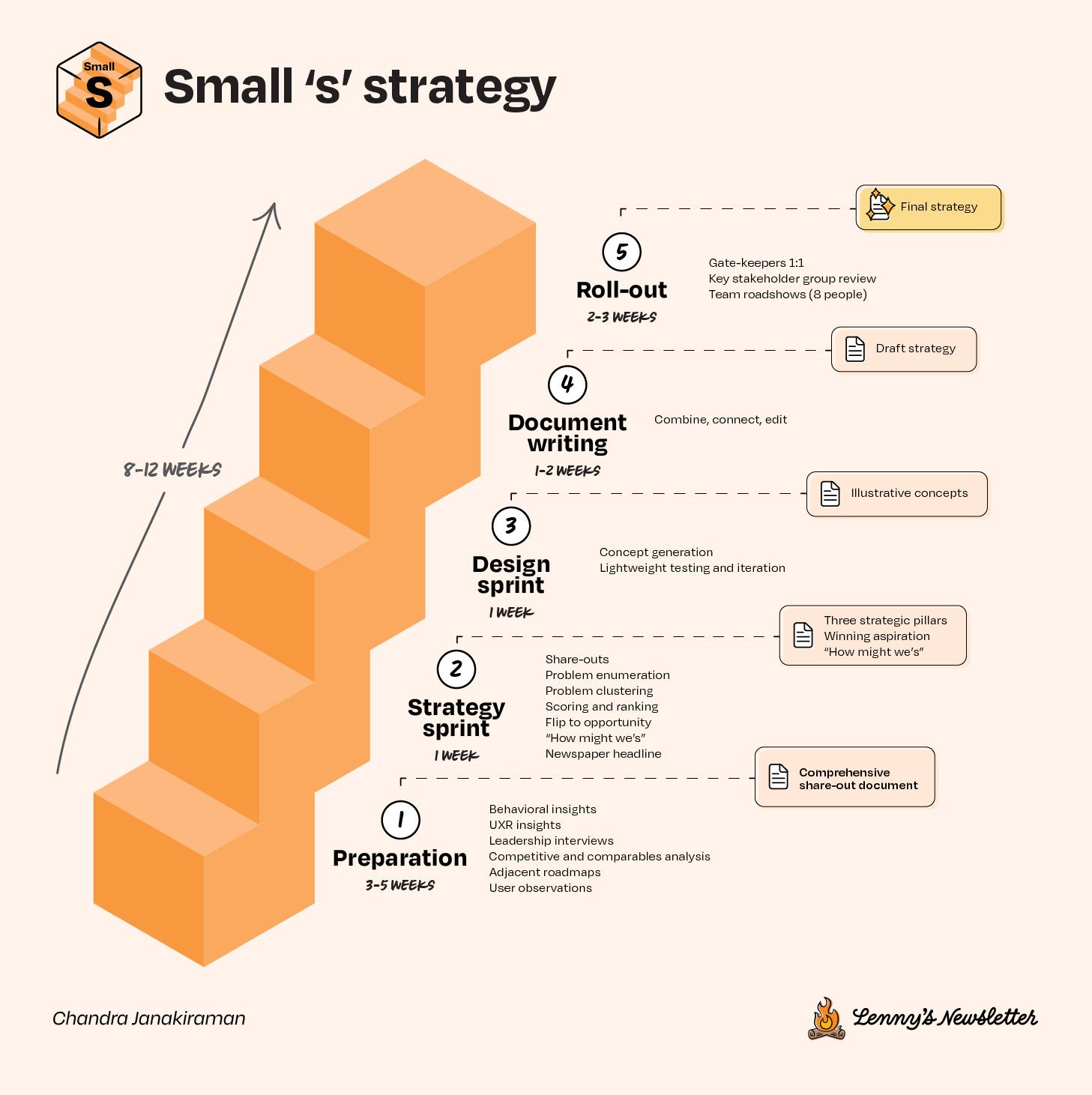Why your Users don't care about your Product Strategy
Why your Users don't care
|
Dear Reader,
One of the most powerful ways to spot and stop Alibi Progress is to start treating our practices like products.
This means clearly defining three elements:
- Audience: For whom is this practice meant?
- Problem: What core problem does this practice aim to solve?
- Success: How would we know this practice has delivered value?
The question then becomes: "For whom is this way of working trying to solve what problem, and how would we know it was solved?" instead of "Are we implementing this practice correctly?"
Treating Product Strategy Like a Product
In many companies, there's a tendency to take the CEO's ideas and repackage them in a Business Model Canvas, so they look like a "proper strategy." That's textbook Alibi Progress.
To make Product Strategy truly valuable, articulate its value for you. I define its value like this:
"For product teams and stakeholders, Product Strategy helps intentionally say yes or no to opportunities. We know it's successful when most team efforts align with the strategy and teams proactively decline misaligned requests."
Let's unpack this value statement:
For your audience (product teams and stakeholders):
- Strategy isn't primarily for customers—they care about your products, not your strategy
- The real consumers are internal: teams and stakeholders who need to make decisions
- If teams aren't considered a primary audience, strategy becomes something "done to them" rather than "done with them."
For the problem you're solving (saying yes/no to opportunities):
- Strategy's fundamental purpose is to enable clear decisions
- Without explicit choices, teams chase competitors or follow technology trends
- Good strategy prevents the "sushi pizza" syndrome—trying to build something for everyone but satisfying no one
For your success measures (aligned efforts and declined misaligned requests):
- Track how much team energy goes to efforts connected to strategic priorities
- Measure how frequently teams confidently decline opportunities that don't align
Remember: You're not a better product manager because you filled out a strategy template correctly. You're better when you can confidently say no to opportunities that don't fit your strategy and yes to those that do.
Next week, I will share the practical benefits of treating OKRs like a product.
Did you enjoy the newsletter? Please forward it. It only takes two clicks. Creating this one took two hours.
Thank you for Practicing Product,
Tim
Be better with OKRs, not at OKRs
Join me for an engaging roundtable conversation about pragmatic and practical OKRs at this year's ProductLab Conf> on September 18 in Berlin, Germany.
| GET THE TICKETS! |
As a Product Management Coach, I guide Product Teams to measure the real progress of their evidence-informed decisions.
I focus on better practices to connect the dots of Product Strategy, Product OKRs, and Product Discovery.
Product Practice Newsletter
1 tip & 3 resources per week to improve your Strategy, OKRs, and Discovery practices in less than 5 minutes. Explore my new book on realprogressbook.com
Product Practice #389 My 2025 Annual Review READ ON HERBIG.CO PUBLISHED Dec 19, 2025 READING TIME 4 min & 24 sec Dear Reader, This is my last newsletter of 2025. I will return to my weekly writing cadence on January 8, 2026. What I focused on in the second half of 2025 After wrapping up the first half of 2025, the rest of the year continued to be a dense mix of experiences. Publishing my Book. It sometimes still feels surreal to see reviews and physical copies of my book. Real Progress: How...
Product Practice #388 Your Strategy Can't Help You If It Can't Help You Say No during Execution READ ON HERBIG.CO PUBLISHED Dec 12, 2025 READING TIME 3 min & 23 sec Dear Reader, Stephanie walked out of her strategy presentation feeling confident. The executives had nodded approvingly. Every field on her strategy canvas was filled in. Her product strategy for GearSwap, an outdoor gear marketplace, conveyed a clear message: “The GearSwap marketplace will proactively help weekend warriors and...
Product Practice #387 Can We Drive the Same Outcome for Different Customer Segments? READ ON HERBIG.CO PUBLISHED Dec 5, 2025 READING TIME 4 min & 40 sec Dear Reader, "An outcome is a measurable change in human behavior that creates business value." (via Josh Seiden). But what if different customer segments share the same problem? Should you repeat the outcome on your impact map? The answer: Yes—when it forces clarity. From the chapter "Targeted Discovery" in my Book Real Progress Let me give...
